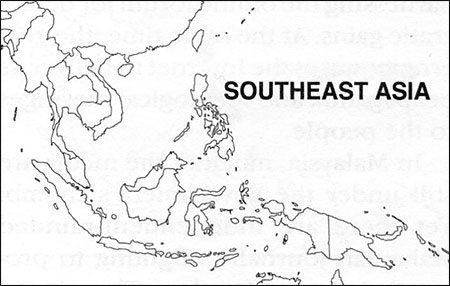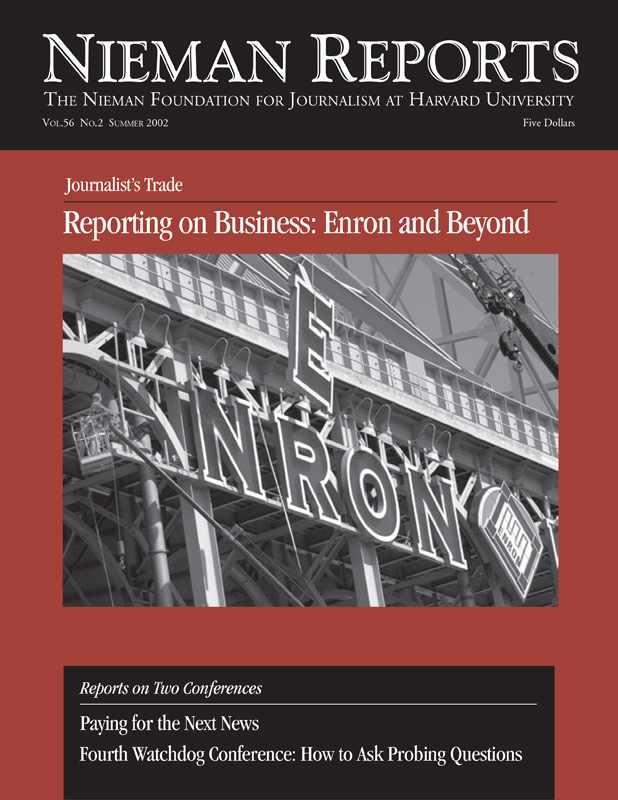
The levels of freedom experienced by print and broadcasting media in the nations of Southeast Asia vary from the freewheeling to totalitarian to something in between. This circumstance is very much related to the vast political and cultural diversity found in this region. How able the media are to act independent of government control and self-censorship, resulting from intimidation, is influenced by what form of leadership exists in the respective country and whether the political leaders are fearful of independent media.
An added threat to the media’s already vulnerable professional standing, as well as to their economic ability to survive, revolves around the effect of the region’s 1997 economic crisis. This crisis inflicted a heavy toll on the practice of journalism in countries such as Thailand and the Philippines, where freedom of the press had been established. Less effect on media was felt in other countries in this region that were controlled to various degrees by government.
More recently, confronted by increasing criticism through the media, authorities throughout the region have intensified their crackdown on the free print and broadcast media. In silencing this criticism, the methods used have been more sophisticated than in past decades. Governments have either revamped existing anti-press laws or reinterpreted them to undermine the work of journalists. And, increasingly, owners and proprietors of media organizations have been rewarded in various ways when the government’s point of view is predominant. Still, traditional methods of intimidating independent voices continue unabated.
In Southeast Asia, the notion that democratic governments would support free media is now seen as an illusion. Media in Thailand and the Philippines, where the region’s most vibrant press reside, are suffering greatly under their popularly elected leaders. Thailand’s Prime Minister Thaksin Shinawatra, who came to power in 2001 with an overwhelming majority, has restricted freedom of expression in Thailand as never before. During the first year of his reign, his modus operandi has ranged from the removal or reshuffling of talk-show hosts to the suspension of television and radio programs unfriendly to government. Through the prime minister’s control of huge advertisement budgets from state-run institutions and enterprises, as well as his personal network of companies and affiliates, only media that support the government have been awarded large chunks of advertising and incentives.
This situation enables the government to spin news and to confuse and control the Thai media. The absence of critical political coverage, something unusual for the Thai media, demonstrates the extent of the present government’s control. It is leading to so-called “media apartheid,” under which only pro-Thaksin media outlets will prosper. These actions contravene the country’s 1997 constitution, which guarantees freedom of expression in government and public media and prevents the government from interfering with all forms of media.
While the media in the Philippines also suffer, they remain the freest, and thus able to support the best investigative journalism in the region. Serious Filipino journalists are very capable of exposing the flaws of the country’s leaders and their reports often generate instantaneous consensus. Without such media freedom and public engagement, the “people’s power” would not have been experienced. Former President Joseph Estrada’s attempt to control media and influence their reporting during his short tenure backfired as the audience and readers boycotted the efforts of his media cronies. With a lively media market and fierce competition, public demand and support has been a key factor in nurturing the Philippines’ media independence.
In Thailand and the Philippines, information technology also helps to disseminate news and keep the public informed, and has mobilized them in support of social causes. In May 1992, bloodshed on Bangkok’s streets was reported and mass demonstrations mobilized via cell phones and broadcast TV satellite. These communication tools helped the public to circumvent the physical barriers and media blackouts put up by authorities. In the Philippines, the short message service (SMS) linked the users and kept them engaged. Urged on by crisp and rousing messages, people showed up in force, and their protests drove the dictator away.
Amid this proliferation of information technologies, governments attempting to control the press are struggling against the possibilities created by these new media. And they are doing so at a time of greater global connectivity, which also pushes open their regional enclave. But, still, government controls exist. For instance, the online users in Singapore, which has one of the highest rates of Internet use in the world, are under close scrutiny through a comprehensive system of government surveillance and legislation. Cyber task forces regulate and control free speech on the Internet as the government seeks to prevent people and groups from harnessing the online forum for democratic gains. At the same time, the government uses the Internet to deliver its propaganda and ideological messages to the people.
In Malaysia, much of the media are still under the government’s thumb. Yet there are independent-minded Malaysian journalists fighting to protect their limited freedom. They signed petitions to repeal anti-press laws but to no avail. The government has used the draconian Internal Security Act to imprison dissenting journalists, but it has failed to silence them. Despite government pressure, the three-year-old online newspaper, Malaysiakini, survives as a reliable source of news and information. For now the government tolerates this online news provider since it does not want to damage its much-heralded blueprint of turning Malaysia into a super-cyber state designed to attract foreign investment in information technologies. It is unclear how long Malaysiakini will avoid the government’s wrath. Its ever-increasing popularity irks top government leaders, who are constantly looking for ways to crack down.
Media freedoms in Indonesia and Cambodia are new and blossoming. As one of the world’s largest democratic countries with a large number of journalists, Indonesia is a new experimental ground for free media, if they can find ways to serve readers who are from varied cultural backgrounds. During the past several months, militant mobs belonging to social pressure groups have attacked newspaper offices and TV stations when they did not like their reporting. It is the nation’s struggle, as well as that of its journalists, to try to maintain unity amidst great diversity while also nurturing democracy. Unless journalists find ways to bridge these differences, they are likely to fall prey to a well-propagated mantra that they contribute to undermining political stability and weakening social fabrics. In Cambodia, such justifications are frequently cited by the government when it seeks to shut down a newspaper.
While the quality of Indonesian and Cambodian media still leave much to be desired, journalists make a difference in their respective societies. Many have kept their societies open to scrutiny both from the inside and outside, but to progress in this work, these journalists need additional training in media ethics and investigative skills.
In Southeast Asia’s “dark zone”—Vietnam, Laos and Burma—media freedom is still regarded as a serious threat to the longevity of one-party rule. Considered off-limits are any open discussions about political issues either in print or on radio or television. In Vietnam, government-sanctioned criticism on targeted issues does occur. Government leaders allow this to happen as a way of pushing forward necessary bureaucratic reform. The future for news media in these countries is bleak unless further democratization takes hold, and this step will need to be coupled with acknowledgement of the media’s role in nation-building and governance.
Media in Southeast Asia are polarized: either they serve the public or they serve leaders. In Thailand, the Philippines, Indonesia and Cambodia, the public is served. In much of the rest of the region, it is the leaders that journalists serve. The media in Singapore and Malaysia have tried to serve both masters. But, in the end, the leaders’ dominance trumps the duty to readers. But even journalists who work in the freer media countries face uncertainties as their elected government leaders still look for ways to lessen the media’s ability to provide independent views and analysis.
The greatest challenge journalists have in Southeast Asia is to improve the quality of their reporting and strengthen their capacity for distributing independent news. Because only a minority of the several thousand working journalists throughout the region are considered competent, awareness needs to be heightened of what it means to be journalists, and that must happen through education. What is difficult to witness is that despite the region’s interdependence with the rest of the world and its economic openness—promoted by the regional governments—similar advances have not occurred within the region’s press.
After September 11, the press in Southeast Asia have encountered new media restrictions and reduced freedom of information in the name of national security. In the Philippines and Thailand, for example, there is talk of drafting an anti-terrorism law that could further limit civil and media liberties. Self-imposed censorship among journalists has also been exercised to a greater degree than it was before.
Once a freer media environment exists in these countries, Southeast Asian journalists will be able to define and act in their watchdog role that promotes openness of discussion, the transparency of actions, and good governance.
Kavi Chongkittavorn, a 2002 Nieman Fellow, is the managing editor of The Nation. He is chairperson of Southeast Asian Press Alliance, a regional free media advocacy group based in Bangkok.



